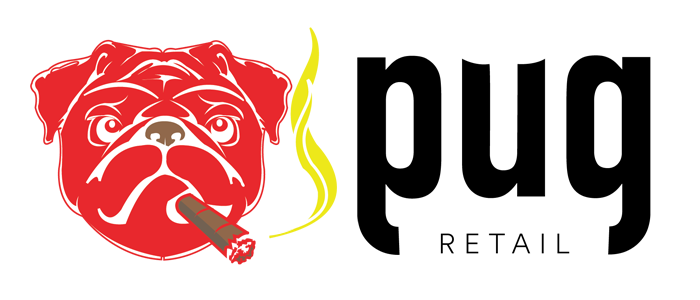What if I told you that your small business could thrive just by harnessing the power of social media? In today’s digital age, a strong social media presence is no longer just a luxury; it’s a necessity. If you’re still figuring out how to navigate through social media for your business, you’re in the right place. Let’s break this down into manageable pieces.
What is Social Media Presence?
Your social media presence refers to how your business appears and engages on various social media platforms. It includes the profiles you create, the content you share, and how you interact with your audience. Think of it as an extension of your brand—where your personality shines, and your message resonates.
Why is it important? A vibrant social media presence gives you the opportunity to connect with customers, showcase your products or services, and even address concerns directly and promptly. In many ways, your online presence can greatly influence your potential customers’ perceptions of your business.
Building Your Social Media Presence
When you’re ready to build your social media presence, start by choosing the platforms that work best for you. Target the ones where your audience spends their time. For instance, Instagram is fantastic for visual content, while LinkedIn is ideal for B2B interactions.
Choosing the Right Platforms
Different platforms serve different purposes.
| Platform | Best For | Audience Type |
|---|---|---|
| Community engagement | Broad audience | |
| Visual storytelling | Younger audience | |
| Professional networking | Business professionals | |
| Real-time updates | General audience | |
| TikTok | Creative short-form videos | Younger audience |
Pick a couple of platforms that align with your target audience. A focused approach will yield better results than trying to maintain a million accounts all at once.
Creating Engaging Content
Once you’ve chosen your platforms, the real fun begins: creating content that resonates with your audience. Here’s how you can make your posts engaging.
Understanding Your Audience
Knowing your audience’s likes, dislikes, and interests is key. Look at demographics, behavior, and what kind of content they interact with most. If your audience is primarily small business owners interested in point-of-sale solutions, tailor your content to speak directly to their needs.
Content Types
Different types of content can invoke different reactions. Here are a few types you might consider producing:
- Informational Posts: Share tips related to running a small business, like how to optimize your POS system.
- Testimonials: Encourage satisfied customers to share their experiences with your services.
- Behind-the-Scenes Content: Showcase your team, your workplace, or even the process of developing your products or services.
- Promotional Posts: Advertise sales, new arrivals, or special offers, tying them into your parent company, bighairydog.com.
For example, if you’re promoting your POS system, you could share a post that highlights its features and the benefits of using it for small businesses.
Consistency is Key
Consistency helps in building recognition and trust. Decide how often you will post and stick to it. Whether you post daily or weekly, ensure that you stay true to your schedule to keep your audience engaged.
Developing a Content Calendar
A content calendar can help keep your posts organized. You can outline what type of content you’re going to post each day of the week or month. Here’s a simple layout you might find useful:
| Day | Content Type | Topic |
|---|---|---|
| Monday | Informational Post | POS tips for retailers |
| Wednesday | Behind-the-Scenes | Team introductions |
| Friday | Promotional Post | Special discount on POS |
A content calendar allows you to visualize your strategy and make adjustments easily.
Engaging Your Audience
Now that you have a content plan, it’s time to engage your audience. Social media isn’t a one-way street; it’s about conversations.
Responding to Comments
Make sure to respond to comments and messages. Your followers want to feel heard. Whether it’s a question about your POS system or a simple compliment, engaging with your audience builds rapport and sets a welcoming tone.
Hosting Contests or Giveaways
A good way to boost engagement is by hosting contests or giveaways. Encourage followers to like, comment, or share a post to enter. Offering a small prize related to bighairydog.com or pugretail.com can increase interest in your page, and better yet, these activities can also promote your products.
Measuring Success
To know if your efforts are paying off, you have to track your performance.
Key Metrics to Monitor
Keep an eye on these metrics that matter:
- Engagement Rate: Likes, comments, and shares on your posts.
- Follower Growth: How many new followers you gain over time.
- Traffic to Your Website: See if your social media efforts lead to visits to pugretail.com.
- Conversion Rate: Are social media followers becoming customers?
Using tools like Google Analytics or social media insights can make this process more manageable.
Paid Advertising Options
If you’re looking to boost your reach, consider utilizing paid advertising. Platforms like Facebook and Instagram offer options to target specific demographics, which can widen your audience.
How Much Should You Spend?
Your budget for social media advertising can vary greatly based on your goals. Here’s a rough outline for you:
- Small Campaigns: $5-$10 per day to test ad effectiveness.
- Monthly Budget: $300-$500 for consistent engagement and targeted ads.
- High-Impact Ads: $1,000+ if you’re looking for more substantial visibility.
Investing wisely can lead to a significant return, especially when promoting your POS system.
Collaborating with Influencers
Team up with social media influencers who align with your brand. This strategy can extend your reach and add credibility to your business.
Choosing the Right Influencers
Make sure the influencers you collaborate with have an audience similar to yours. They should resonate with small business owners and promote products like your POS system effectively.
What to Offer Influencers
Typically, influencers might accept free products, commissions on sales, or monetary compensation. Be clear on what they’ll be promoting, ensuring it aligns with the interests of their audience.
Navigating Challenges
While building a social media presence can be rewarding, there are challenges you might face along the way.
Dealing with Negative Comments
Negative comments can be disheartening, but they offer an opportunity for improvement. Address them promptly and professionally. A well-handled critique can demonstrate your commitment to customer service.
Algorithm Changes
Social media platforms frequently change their algorithms, which can affect your visibility. Stay up-to-date with the latest changes and adapt your strategies accordingly.
Creating a Brand Voice
Your social media presence is also an extension of your brand’s personality. It’s essential to develop a cohesive brand voice that reflects your values.
Finding Your Voice
Consider how you want to communicate with your audience. Decide whether you prefer a formal tone or a more casual, friendly one. Whichever you choose, be consistent to strengthen brand recognition.
Aligning with Company Values
Your posts should echo the mission of pugretail.com and bighairydog.com. Highlight your commitment to supporting small businesses, showing that you genuinely care about your customers’ success.
Networking Through Social Media
Engaging with other businesses and professionals can provide valuable insights and opportunities.
Partnering with Local Businesses
Collaborating with local businesses can enhance your reach and provide cross-promotional opportunities. Share each other’s posts, co-host events, or even create bundled offers.
Joining Relevant Groups
Consider joining Facebook groups or LinkedIn forums related to small business ownership. This can act as both a learning experience and an avenue to promote your services.
Staying Ahead of Trends
The digital landscape is always evolving, and keeping your content fresh is vital.
Keeping Content Innovative
Pay attention to trending topics or technology in your industry. For example, explore how new advancements in POS technology can benefit small businesses, sharing unique insights and positioning yourself as a thought leader.
Incorporating User-Generated Content
Encouraging customers to share their experiences with your products can provide authenticity. Most consumers trust peer recommendations over brand messaging, so leverage user-generated content to build credibility.
Concluding Thoughts
Your social media presence is an invaluable asset for your business. By leveraging platforms effectively and engaging meaningfully with your audience, you not only promote your products but also create a community around your brand. Remember to tie everything back to your commitment to helping small businesses through your tailored POS system at pugretail.com and the years of experience offered by your parent company, bighairydog.com.
Be patient; building a strong presence takes time, but the connections and growth it brings are absolutely worth it. Keep smiling, stay consistent, and watch your efforts blossom into something truly wonderful!

